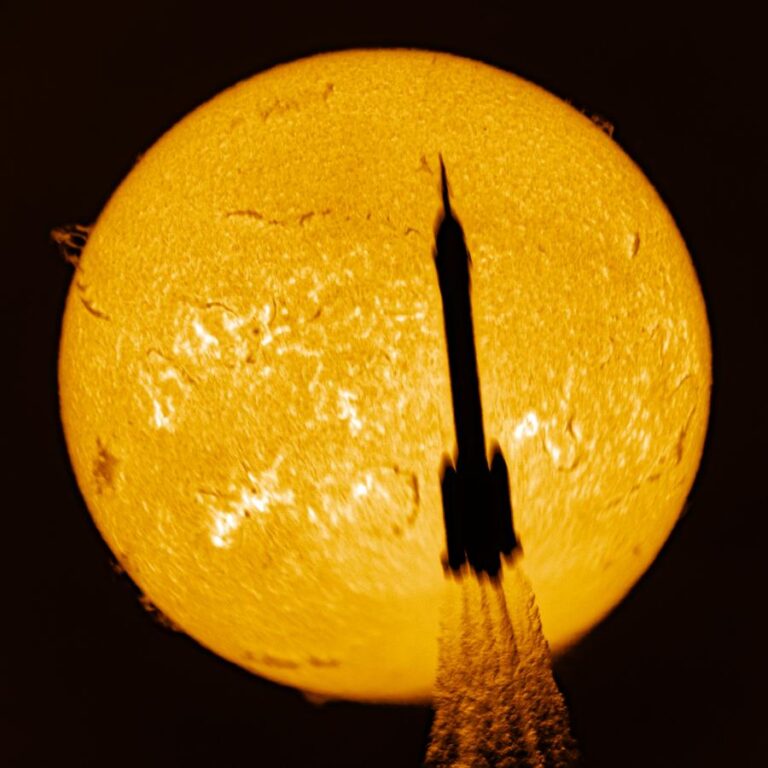*The spaceship, flying without a crew aboard, carried a cargo of space food, medical supplies, fresh fruit and vegetables, as well as devices for fixing the cracked window on the Shenzhou-20 spaceship.
*Within 20 days, all participating research and testing units collaborated and completed a series of critical tasks, including risk assessment, solution analysis and decision-making, personnel and material deployment, crew return aboard a replacement vessel, as well as an emergency launch, offering a world-class example of managing an in-orbit emergency, the CMSA said.
*Since the Shenzhou-12 mission, China’s manned spaceflight has adopted a “rolling backup” model, with one combination of the spaceship and rocket for launch and another combination designated as backup for each mission. This ensures that a backup combination of launch vehicle and spaceship is always on standby, ready to be rapidly deployed for an emergency space station rescue mission.
JIUQUAN, Nov. 25 (Xinhua) — China on Tuesday launched the Shenzhou-22 spaceship to provide a return vessel for the three Shenzhou-21 astronauts in orbit. This momentous occasion marked the accomplishment of the first emergency launch mission in the country’s manned space program.
The spaceship, atop a Long March-2F Y22 carrier rocket, blasted off from the Jiuquan Satellite Launch Center in northwest China at 12:11 p.m. (Beijing Time), according to the China Manned Space Agency (CMSA).
About 10 minutes after the launch, the spaceship separated from the rocket and entered its designated orbit. The CMSA declared the launch mission a complete success.
After entering the orbit, the spaceship made a fast, autonomous rendezvous and docking with the front port of the space station’s core module Tianhe at 3:50 p.m. (Beijing Time), the agency said.
The spaceship, flying without a crew aboard, carried a cargo of space food, medical supplies, fresh fruit and vegetables, as well as devices for fixing the cracked window on the Shenzhou-20 spaceship.
The launch of the new spaceship followed the return of the three Shenzhou-20 astronauts back to Earth on Nov. 14 by the Shenzhou-21 spacecraft.
The return mission, initially scheduled for Nov. 5 by the Shenzhou-20 spaceship, was delayed due to a suspected debris impact on the Shenzhou-20 return capsule’s viewport window.
The Long March-2F Y22 rocket and the Shenzhou-22 spaceship — already on standby at the launch site upon the contingency — were swiftly prepared for launch.
After the initiation of the contingency plan, all teams involved in the project demonstrated a composed and methodical approach.
Within 20 days, all participating research and testing units collaborated and completed a series of critical tasks, including risk assessment, solution analysis and decision-making, personnel and material deployment, crew return aboard a replacement vessel, as well as an emergency launch, offering a world-class example of managing an in-orbit emergency, the CMSA said.
The success of this mission fully demonstrated the strengths of China’s new system for mobilizing resources nationwide, it noted.
To save time, the launch site streamlined procedures, said Liu Feng, an expert from the China Aerospace Science and Technology Corporation (CASC), noting that there were three unchanged aspects for the rocket system in this emergency mission.
The life-and-safety-first principle, the rocket’s fundamental technical specifications and the overall flight plan remained unchanged, Liu said.
Since the Shenzhou-12 mission, China’s manned spaceflight has adopted a “rolling backup” model, with one combination of the spaceship and rocket for launch and another combination designated as backup for each mission. This ensures that a backup combination of launch vehicle and spaceship is always on standby, ready to be rapidly deployed for an emergency space station rescue mission.
“As the first ship of the new batch, Shenzhou-22 incorporates upgrades covering its instrumentation system, payload installation space, and electronic components,” said Diao Weihe, an expert from the CASC.
The newly launched spaceship will later serve as a return vehicle for the Shenzhou-21 astronauts in orbit. They were launched aboard the Shenzhou-21 spacecraft on Oct. 31, and are expected to return to Earth after completing a six-month mission.
They are now in good condition, and are performing their in-orbit duties as planned, the CMSA said.
(Video reporters: Peng Yuan and Zhang Sheng; Video editors: Hong Liang, Luo Hui and Shi Peng.) ■

